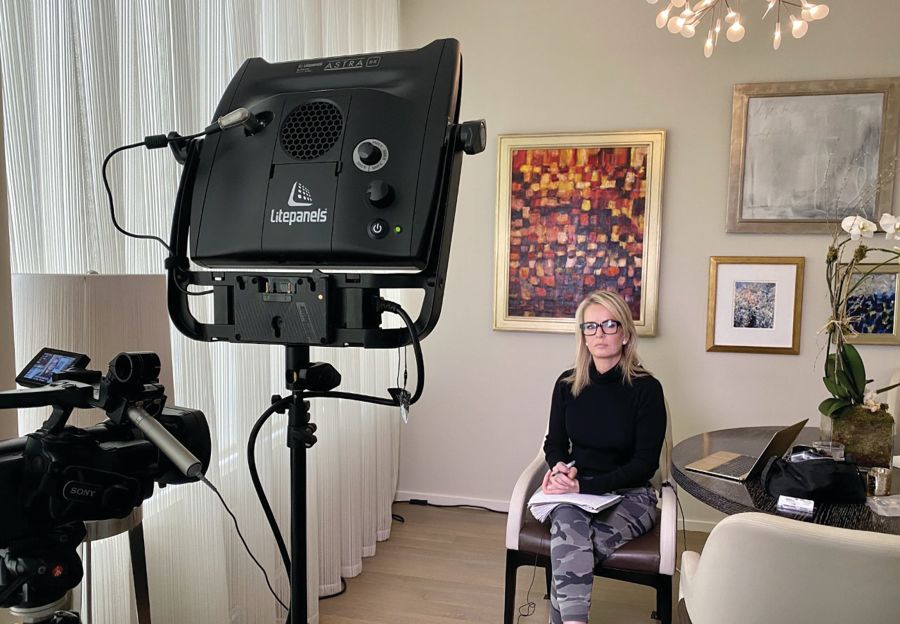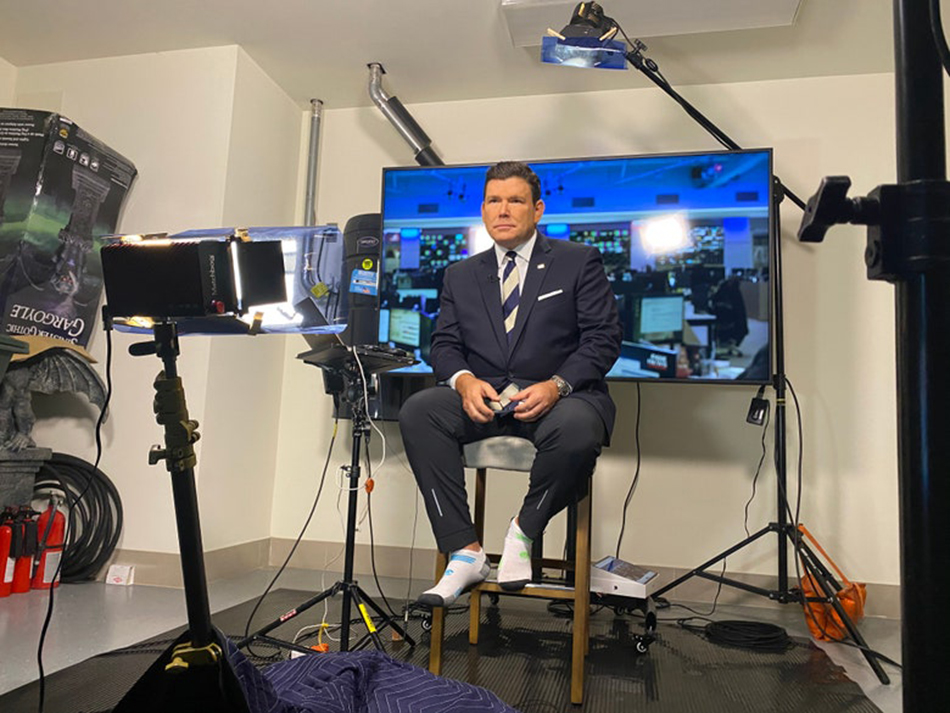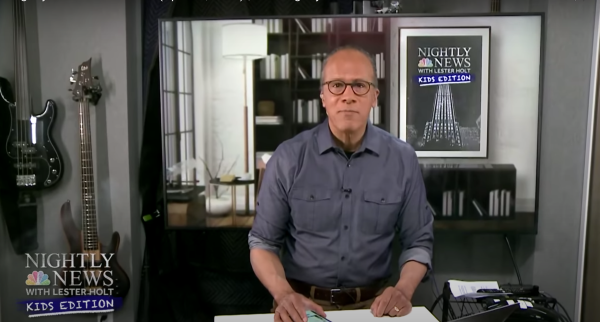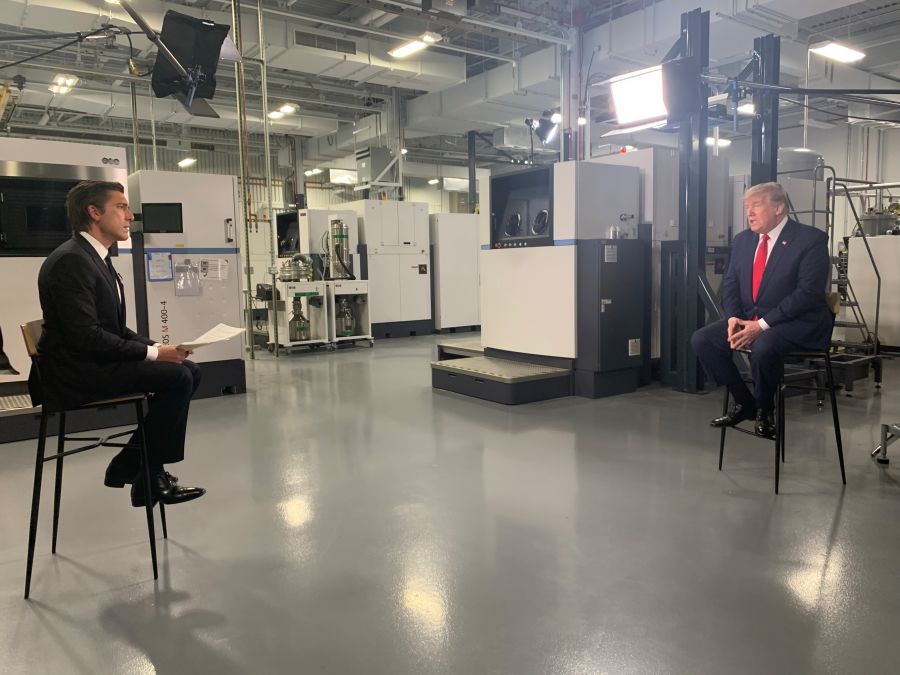Pandemic Reshapes News Business
Crisis has strengthened the bond between anchors and viewers. Will it last?
It has been, by every conceivable measure, a perfect storm for news viewing. As the pandemic rages on, people are stuck at home and are desperate for timely information related to this enormous, horrifying story.
And news outlets, ranging from cable news networks to broadcast news divisions, are eager to provide viewers with the latest.
But what happens down the road? When the pandemic eventually dies down — it has to, right? — will viewers still be fervidly searching out news on TV? There’s no way news can sustain the lofty ratings of today, but many executives are hopeful to see a bump when the massive story of 2020 subsides. “We’ve exposed the audience to our programs and we’ve gotten before new audiences,” Kim Godwin, executive VP at CBS News, said. “I hope people who watch us now appreciate the journalistic integrity of our shows. I hope the audience gets used to watching us and likes our journalists.”
As the coronavirus curve has flattened across some parts of the country, news consumption has ticked downward from its high levels in the early days of the crisis. News programming was 19% of total TV time March 16-22, according to Nielsen, and dropped to 17.5% April 6-12. During March 16-22, subscription video-on-demand viewing on platforms such as Netflix was 15.1% of TV time, which ticked up to 15.4% April 6-12.

In an era when one hears about fake news on a daily basis, the TV news organizations are optimistic that the pandemic has drawn a clear line between established news outfits and the less credible ones. “There’s a reason viewers are turning to us now and trusting us at a terrible time,” ABC News VP of newsgathering Wendy Fisher said. “They’re not turning to us for fun. They’re turning to us because we provide information at this time of difficulty.”
Even before the pandemic, slow news days were increasingly uncommon in the modern media landscape. The post-pandemic days will surely be newsy too, which benefits the networks. For starters, America will decide on a new president inside of six months. TV news will be all over that, and so will viewers.
“This story does not seem like it is leaving, but we have long-range stories we’re staying focused on,” said Jay Wallace, president and executive editor of Fox News Media. “I do think people will be checking in with news for a long time to come.”
Broadcasting & Cable Newsletter
The smarter way to stay on top of broadcasting and cable industry. Sign up below
Network news executives are hopeful that the pandemic got viewers in the habit of seeking out timely information from their favorite networks, and perhaps strengthened the bond between a particular anchor or host and viewers. With viewers stuck at home, many can watch a daypart they don’t normally tune in for.
“My expectation is that people will be more engaged and interested,” said Rashida Jones, senior VP at NBC News and MSNBC. “The work we do gives us the opportunity to showcase for people who haven’t watched us — show them what we do and what we are capable of doing. Hopefully, that brand can continue when we cover other stories.”

New News Demeanor
News may never look the same after the pandemic clears out. The coronavirus has been a deeply personal issue, with more than 1,000 deaths a day nationwide. At a time when it has become somewhat common to see politicians showing their emotions while updating residents on corona, anchors too are at times scrapping their stoic demeanors while reporting this story. Some news veterans suspect the indifferent comportment that has long defined TV anchors is giving way to a more human bearing.
“The Voice of God — I’m not sure that’s what people are looking for now,” said Wallace, who describes Fox News’ anchor-viewer connection as the network’s “secret sauce.” “They are looking for people who are in this together — this sense of, you understand my struggle.”
Deborah Jaramillo, associate professor and director of the film and television studies program at Boston University, and author of Ugly War, Pretty Package: How CNN and Fox News Made the Invasion of Iraq High Concept, said giant news stories typically vault an anchor or two to the next level, as President Donald Trump’s election did for MSNBC’s Rachel Maddow. Showing emotion, such as CNN host Don Lemon getting choked up over fellow host Chris Cuomo’s coronavirus diagnosis, may help launch TV talent.
“There’s a greater emphasis on humanity, a greater emphasis on emotion,” Jaramillo said. “You see that conveying of emotion playing out in public on cable news. Perhaps some of that connects with viewers.”

Short Cuts
With Cuomo broadcasting from his basement, NBC’s Lester Holt anchoring NBC Nightly News from his apartment and the vast majority of newsroom staffers toiling from home, the networks have redefined the way they produce news these last couple months. In several markets, including Tampa, Florida, and Washington, D.C., competing news stations are teaming up to send a lone photographer to a static news event such as a mayor’s press conference, then sharing the video. Fewer photographers on site means better social distancing, and frees up photographers to chase down more enterprising stories.
“It’s so smart and long overdue,” Andrew Heyward, Knight senior researcher in TV news innovation at Arizona State University’s Walter Cronkite School of Journalism and Mass Communication, said. “The culture of innovation that emerges from this results in a smarter workflow.”
Networks and stations alike are getting better every day at producing newscasts with talent and staffers spread around a given market. “I was pleasantly surprised to realize we could function with people working from home,” Fisher said. “I had a lot of trepidation about it. You realize, something you think you have to do this way, you actually don’t have to do it that way.”
Execs said viewers are more lenient about production values that may not be what they are accustomed to. “People are starved for information now,” Godwin said. “They really don’t care if the live shot is not 100% well lit. Skype and Zoom work just as well if you ask the right questions.”
With Manhattan’s CBS Broadcast Center closed, station-level talent, both at CBS’s owned stations and affiliates, have anchored CBS Evening News on weekends during the crisis. Monique Ming Laven, anchor at KIRO Seattle, anchored the national broadcast May 2-3. Godwin called it “a terrific experiment” that benefits both parties.
“We get the opportunity to strengthen our relationship with affiliates, and it’s an opportunity for them to increase their exposure,” she said.
With CBS News unable to send live trucks to all corners of the country, she added, the affiliate base plays a vital role in helping cover all regions of the U.S.
The pandemic prompted NBC to launch Nightly News: Kids Edition, which Holt anchors, in mid-April. The newscast targets uncommon news consumers. “It helps children process what is happening,” said Jones. “We’re making sure the youngest among use are informed and educated.”
Jones said there’s no end date set up for Kids Edition.

Good News
Newscast producers have been keen to inject a bit of good news in the broadcasts, such as Steve Hartman reporting on a newspaper deliveryman handing out groceries on CBS Evening News, David Muir reporting on a high school principal visiting his graduating students on ABC’s World News Tonight and Harry Smith speaking on Nightly News about homemade greeting cards. “I think it’s just us being human,” said NBC’s Jones. “It’s human moments that show we are all in this together.”
Time will tell if positive news occupies more than the final slot in an evening newscast after the crisis, but the pandemic has certainly stoked a desire for inspiring content. “There’s definitely a thirst for some other news,” Wallace said. “With all the vegetables we serve, people do want some sweets. They’ve had enough Q&As with doctors.”
Time will also tell if TV news, a vital part of people’s lives during the pandemic, remains vital viewing when things get back to normal. The networks are eager to keep meeting sky-high demand.
“Some people who discover evening news might stick around,” said Heyward, former president of CBS News. “They see how important TV news has been on a very complicated story, and that should enhance the value of TV news in people’s lives.”
Michael Malone is content director at B+C and Multichannel News. He joined B+C in 2005 and has covered network programming, including entertainment, news and sports on broadcast, cable and streaming; and local broadcast television, including writing the "Local News Close-Up" market profiles. He also hosted the podcasts "Busted Pilot" and "Series Business." His journalism has also appeared in The New York Times, The L.A. Times, The Boston Globe and New York magazine.

